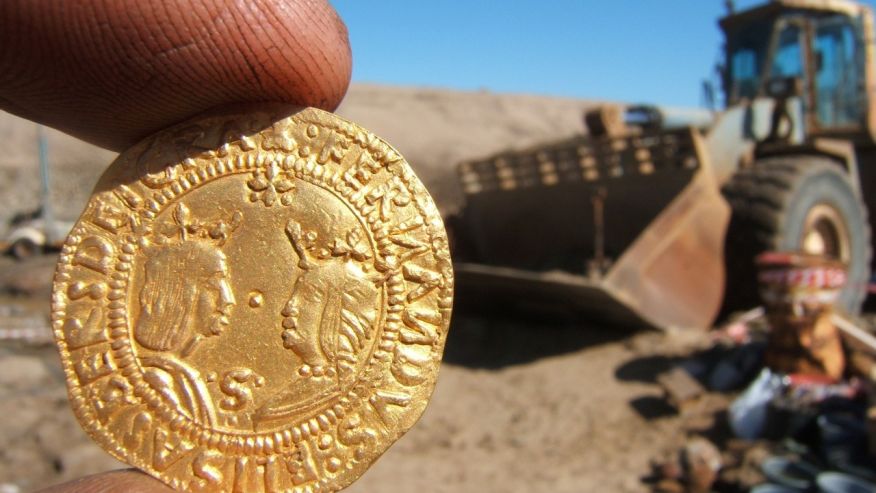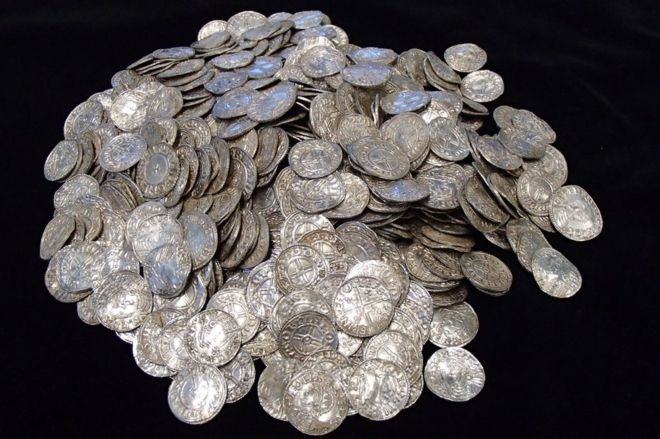500 year-old shipwreck loaded with gold found in Namibian desert.
Diamond miners recently discovered a ship that went down 500 years ago after draining a man-made lagoon on Namibia’s coast. While shipwrecks are often found along Africa’s Skeleton Coast, this one just so happened to be loaded with $13,000,000 worth of gold coins.

It also answers a centuries–old mystery and is what some archaeologists are calling one of the most significant shipwrecks ever found. The wreck was first discovered along the coast near Oranjemund by geologists from the mining company De Beers in April 2008. One reason it took centuries to find is because it was underneath the ocean floor.
The mining site concerned was actually located in the surf zone, where the violent action of the waves theoretically made mining impossible,” archaeologist Dr. Dieter Noli told FoxNews.com. “So what the chaps do is push up a huge sea-wall with bulldozers parallel to the beach, with the ends running back to the beach. The result is a large man-made lagoon, with the surf pounding on the outside. Then they pump the sea-water out of the lagoon.”
It was in this drained lagoon that the wreck was discovered. Noli, who is chief archaeologist of the Southern Africa Institute of Maritime Archaeological Research, wasn’t too surprised– with the abundance of shipwrecks on the coast (Portuguese sailors once called it “The Gates of Hell”), he knew the geologists would turn up something sooner or later.

